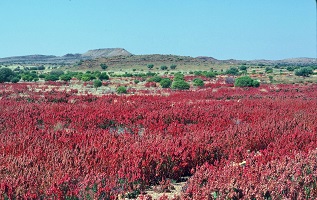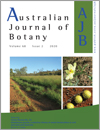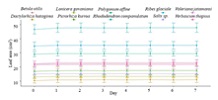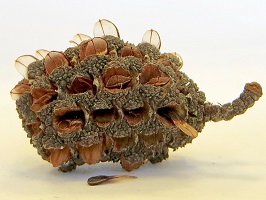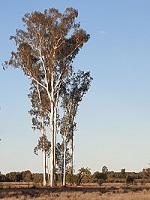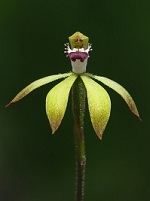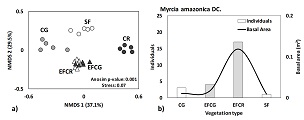Australian Journal of Botany
Volume 68
Number 2 2020
The historical record of weed invasions in arid Australia is scattered and unsynthesised. This paper documents the introduction of 54 widespread plant species that have become invasive in arid Australia. The historical context of plant introductions into arid Australia can help to guide current and future management.
In this study, the effect of temporary storage (at 4°C for up to 7 days) on leaf traits was tested. Results showed that measurements of leaf area are reliable for up to 7 days after temporary storage but should always be taken after rehydration. Delayed measurements of leaf rehydration are not reliable in most of the species and therefore, measurements after prolonged rehydration should be avoided. Specific leaf area and leaf dry matter content can reliably be measured for up to 7 days from samples stored in dark at low temperatures.
Wind dispersal of seeds is a key ecological process for many plants, with seed release as important as the aerodynamics of the seeds themselves. Sheoak seeds (in winged nuts) have been assumed to be passively released on drying of their inclosing cones, but an active mechanism was found that moves them outward (against gravity) to increase their chance of uplift by wind. Understanding mechanisms of seed release in sheoaks is important for understanding factors affecting population recruitment and persistence.
Eucalyptus argophloia is a rare tree species from a subhumid climate that occurs in three vegetation types mostly on fertile soils. Based on the decline in habitat with land-use conversion to crops and pasture, it is estimated that the population has been reduced by 94.2%. Paddock trees may not be replaced by natural regeneration as there is very little regeneration of the species including on ungrazed roadsides, so further decline of the species is expected. The species can be categorised under IUCN Red Listing criteria as Critically Endangered.
Silver nanoparticles (AgNPs) are absorbed by plant roots, presenting toxicity at high concentrations. Lettuce plants (Lactuca sativa) exposed to AgNPs showed morphological alterations and reactive oxygen species production. Germination rate and root development were negatively affected.
Livestock grazing has been used for conservation management in some situations to reduce exotic plant cover, but supporting empirical evidence is scant. We found strong evidence that domestic livestock grazing reduces native plant cover either directly or indirectly in three extensive woodland communities, but limited evidence that it would be a useful conservation management strategy to reduce exotic plant cover.
In food deceptive pollination systems, flowers attract foraging pollinators through the mimicry of other flowers or non-specific floral signals. In Caladenia hildae (Orchidaceae), pollination was by a single species of Hylaeus bee without mimicry of co-occurring plants. While Hylaeus have been recorded visiting orchid flowers, this may represent the first case of an orchid species specialised on Hylaeus for pollination.
Local-scale ecotones present floristic composition and phylogeny groups distinct from the adjacent core areas, since these environments present species that are restricted to them and also species with broad occurrence in landscape, but that have ecological optimum in ecotones. These environments are of great importance for the local diversity and diversity shifts and systemic processes at a landscape scale.
